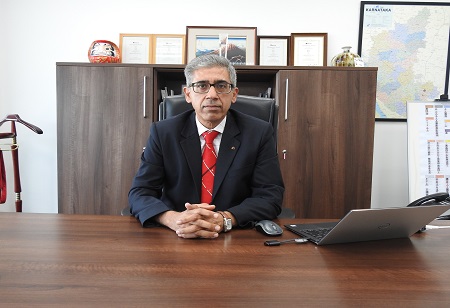
In an interaction with Industry Outlook, Niraj Seth, President, AMADA India, shares his views on the current evolution of press brakes market in India, the challenges involved, and the ways to address them.
As per a report by Technavio, the global press brakes market is expected to become worth USD 413 million by 2025.How do you see its market evolving in India? What are the major factors driving the growth of this market?
The Indian sheet metal market has been growing at rapid pace in last decade. Major investment from Government on infrastructure, telecom, smart city, affordable housing, high speed metro system has initiated setup of new sheet metal producing factories across country.
In every sheet metal shop, bending is very important and critical process. With the invention of new high speed Fiber laser machines, blanking process productivity has improved manifold. However, the bending process productivity is not increased so much which puts a bottleneck on overall factory output.
So, it is the right time for the industry to think about high productivity, automated Press brake to improve productivity and reduce dependency on skilled manpower. Therefore, we can say the next few years, Press brake requirements will increase considerably.
How is AMADA India positioned in this market?
During pandemic, every factory has suffered production losses due to unavailability of manpower. AMADA as a group has always focused on developing new machinery and technology which can improve productivity with minimum skilled manpower dependency.
We have introduced Robotic press brake system suitable for Indian Industry. Also our new series of Press brake are highly energy efficient, high speed which can be operated by unskilled manpower.
These user-friendly press brakes are well received by our customers in India. Our press brakes are known for reliability, consistency and high accuracy. We have largest market share among imported press brakes in India.
Structural precision is the primary aim when it comes to usage of press brakes. What are the major prerequisites for a press brake to ensure bending precision?
Parallelism of the upper and lower beams, CNC controlled pressing cylinders performance, the bed crowning device, and the tooling are some of the prerequisites that determine bending precision and accuracy.
Two major concerns pertaining to performance and efficiency of press brakes are energy consumption and the usage of hydraulic fluid. How does AMADA India allay these concerns with its press brakes?
Amada has product line up which consist of highly energy efficient Hybrid drive system press brakes & completely servo motor driven electric press brakes.
Our unique hybrid drive system ensures highly accurate bending regardless of the bend length or position on the beam. An electric servo motor controls a variable hydraulic piston pump to provide improved productivity and significant energy savings. This system allows energy savings. The consumption is reduced by 30% in average versus Inverter technology.
The advantages of Hybrid drive system are as follows:
• Extremely fast approach, bending and return speeds provide faster cycle times and result in more parts per hour.
• Unequalled ram positioning. Repeatability of ±0.00004"
• Programmable ram tilting and 50% off-center bending capacity allows for quick setup of multiple stage part bending.
• Low power consumption – hydraulic pump motors are on only when the ram is moving.
• Stable hydraulic oil temperature ensures consistent angular accuracy.
• Less hydraulic oil and fewer oil changes required.
• Very low noise level.
How can irreversible distortions of bending press machine or components be prevented? What measures are taken by AMADA India for the same?
AMADA press brake is designed to withstand heavy bending loads and to maintain accuracy throughout its service life. The main frame is constructed from high tempered steel plate and the side frames are so designed that high stress points are eliminated. This rigid frame eliminates welding stress and prevents frame cracking, ensuring long lasting performance.
Where do you see the press brakes market in the near future in terms of new technology adoption? How is it going to transform further?
The development in field of IoT and Automation is going to impact future development of Press brakes. Need for energy efficient, high accuracy, less dependency on skilled manpower and higher productivity will be the key factors of development.
We use cookies to ensure you get the best experience on our website. Read more...